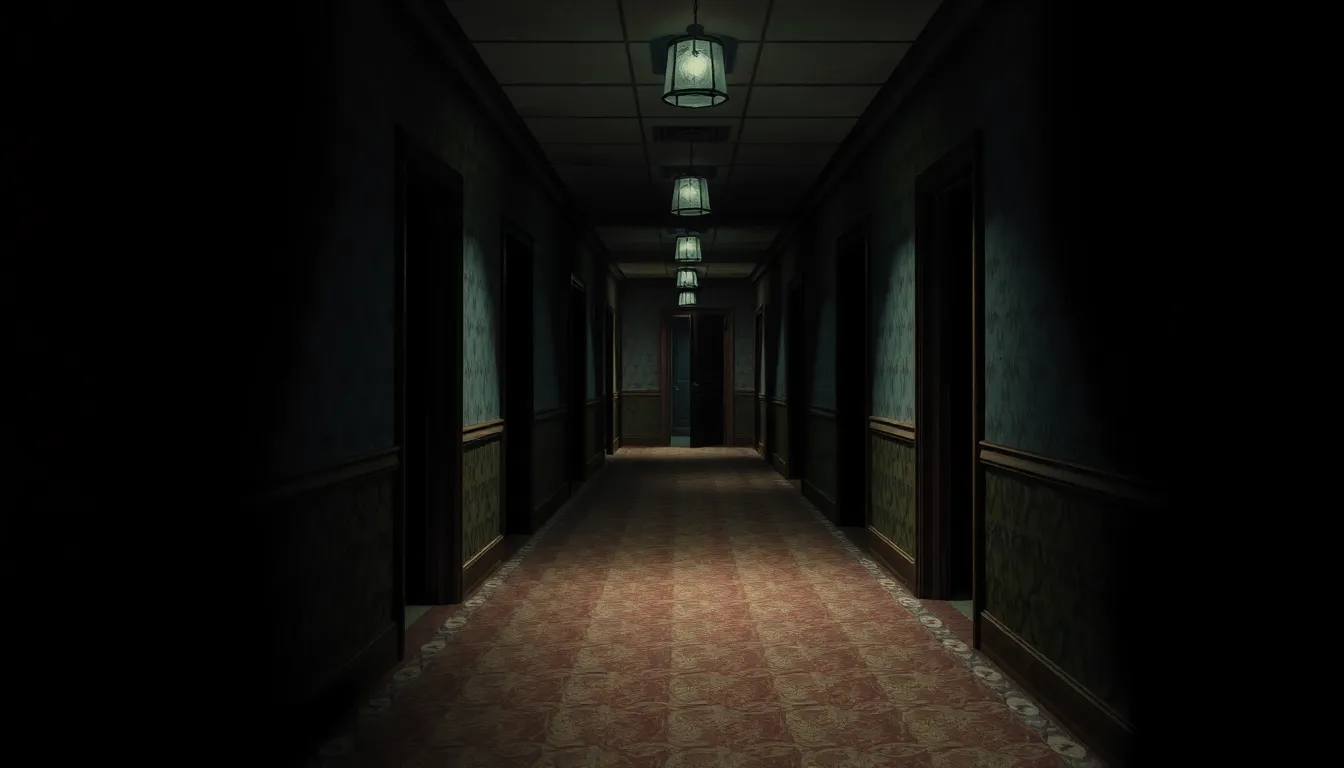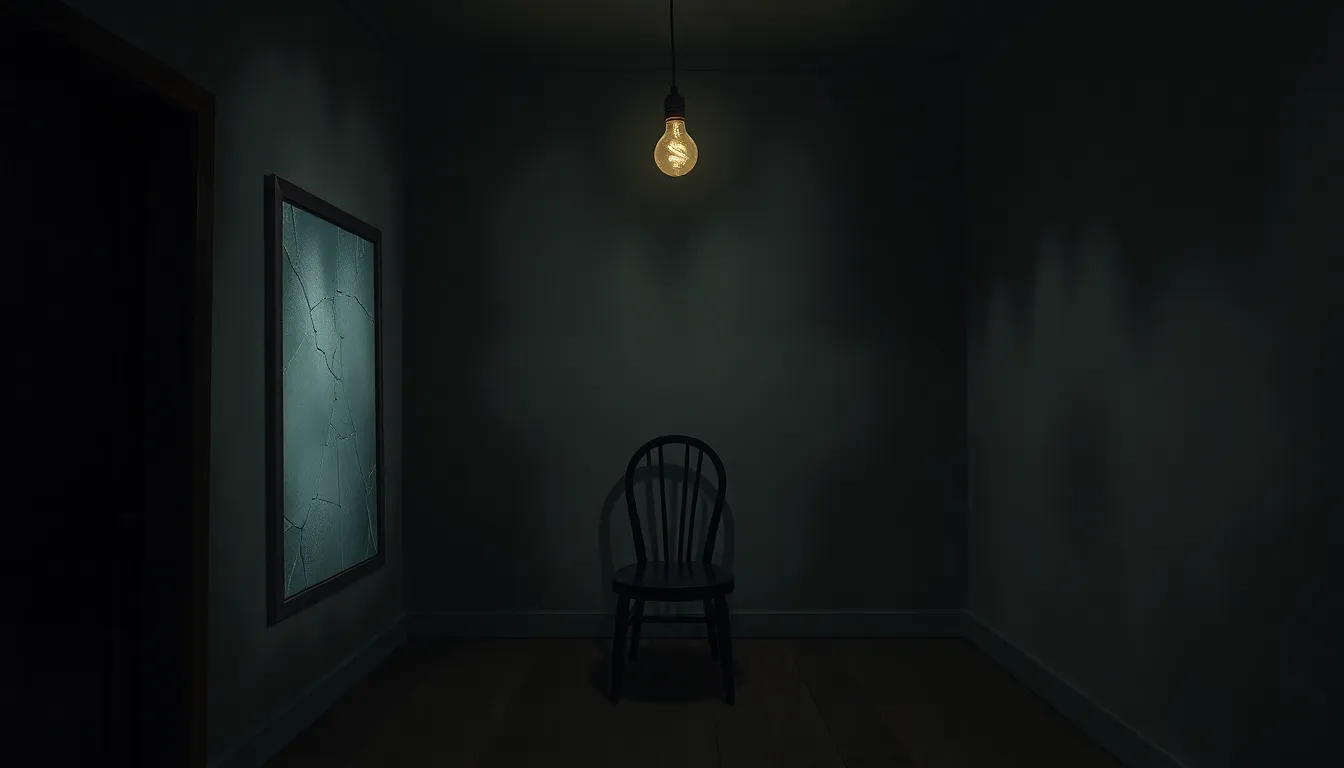When the lights dim and the eerie music starts, horror movie fans know they’re in for a wild ride. Some films manage to crawl under the skin and stick with viewers long after the credits roll. These aren’t just your run-of-the-mill jump scares; they dig deeper, tapping into primal fears that keep even the bravest souls up at night.
From unsettling atmospheres to spine-chilling storylines, the creepiest horror movies have a knack for making hearts race and palms sweat. Whether it’s the creeping dread of a haunted house or the unsettling presence of an unknown entity, these films turn ordinary nights into unforgettable experiences. So grab some popcorn and prepare for a thrilling journey through the creepiest corners of cinema, where every shadow holds a secret and every sound could be the last thing you hear.
Creepiest Horror Movies
Creepy horror movies captivate audiences by tapping into primal fears. These films focus on elements that create an unsettling atmosphere, compelling viewers to question their safety and reality. Common themes include isolation, the supernatural, and psychological trauma, contributing to their effectiveness.
Noteworthy examples include Hereditary, which explores family trauma and the influence of the past. Atmosphere drives tension in this film, engaging viewers with its ominous score and unsettling visuals. Likewise, The Babadook delves into grief and mental illness, creating a psychological horror that resonates deeply with audiences.
Creepy horror movies often utilize slow-building suspense, with minimal reliance on jump scares. The Witch exemplifies this technique, crafting an eerie ambiance that immerses viewers in the 17th-century setting. Characters draw audiences into their descent into madness, heightening emotional investment.
Another standout, Midsommar, presents horror in broad daylight, challenging traditional horror conventions. The film’s unsettling imagery and cult dynamics create a jarring experience, unsettling viewers throughout its runtime. Creepy visuals and haunting themes effectively linger in one’s mind, amplifying its impact long after viewing.
Several other films, such as It Follows and The Ring, also maintain a haunting quality. They generate a sense of dread through unique premises and relentless tension. Explorations of mortality, fear of the unknown, and societal issues emerge, enhancing their creep factor significantly.
Creepy horror movies succeed in creating profound emotional responses by fostering anxiety and discomfort. These films captivate audiences not just with shocking moments but with lingering dread and thought-provoking narratives. Every element—from sound design to character development—contributes to the spooky atmosphere, ensuring lasting impressions.
Classic Creepy Horror Films

Classic horror films establish a foundation for unsettling cinema, captivating audiences through eerie narratives and disturbing visuals. They explore themes that resonate deeply, reflecting primal fears.
The Shining
The Shining presents a chilling story set in a remote hotel. Jack Torrance’s descent into madness creates an intense atmosphere. The haunting presence of the Overlook Hotel amplifies isolation and dread. Visuals, such as the iconic twins and blood-filled elevators, linger in viewers’ minds. Stanley Kubrick’s direction enhances the psychological aspects, blending reality with horror seamlessly. The film evokes fear that extends beyond its runtime, making it a quintessential classic.
Psycho
Psycho redefined horror with its shocking plot twists. Alfred Hitchcock’s masterful storytelling engages viewers from the start. The Bates Motel serves as a backdrop for a tale of identity and madness. Characters, particularly Norman Bates, disrupt expectations and create unease. Iconic scenes, like the shower scene, showcase suspense and surprise effectively. Every frame contributes to a sense of impending doom, ensuring Psycho remains influential in the horror genre.
Modern Creepy Horror Movies
Modern horror films continue to captivate audiences through their unsettling narratives and deep psychological themes. These movies skillfully create an atmosphere of dread, making them unforgettable experiences.
Hereditary
Hereditary terrorizes viewers with its exploration of grief and family trauma. It follows the Graham family as they unravel dark secrets after the death of their enigmatic matriarch. Toni Collette delivers a powerful performance as Annie, whose descent into madness amplifies the film’s unsettling atmosphere. Disturbing imagery, such as the haunting dollhouses and shocking moments, leaves a lasting impression. Critics praise the film for its slow-burn tension, which escalates to a chilling conclusion that resonates profoundly. Unflinching in depicting familial dysfunction, Hereditary stands as a new classic in horror, pushing boundaries and challenging viewers long after the credits roll.
The Babadook
The Babadook offers a haunting examination of grief and motherhood. The film centers on Amelia, struggling to cope with her husband’s death while raising her troubled son, Samuel. It introduces a sinister storybook character, the Babadook, which symbolizes her repressed emotions. As the narrative unfolds, the line between reality and imagination blurs, intensifying the psychological horror. Jennifer Kent’s direction fosters a sense of confinement within the home, amplifying the film’s emotional weight. Viewers experience dread as the monstrous figure emerges, representing the complexities of grief and mental illness. Critics celebrate The Babadook for its innovative storytelling and chilling performances, marking it as an essential entry in modern horror cinema.
International Creepy Horror Movies
Many international films enhance the horror genre through unique storytelling and cultural perspectives. They provide different lenses through which audiences can experience fear and suspense.
Ringu
Ringu originates from Japan and captivates with its unsettling narrative. The story revolves around a cursed videotape that claims the lives of viewers seven days after watching it. It follows journalist Reiko as she investigates the curse while confronting her fears and uncovering dark secrets. Visuals like the eerie figure of Sadako enhance the movie’s creepiness, making it a staple of horror cinema. Its impact extends beyond Japan, inspiring numerous adaptations and remakes worldwide, including the well-known The Ring.
Let the Right One In
Let the Right One In, a Swedish film, stands out with its unique blend of horror and coming-of-age themes. The plot centers on the friendship between a lonely boy named Oskar and a mysterious girl named Eli, who happens to be a vampire. Their relationship unfolds against a backdrop of bullying and isolation, evoking empathy and dread. Striking cinematography presents a chilling atmosphere, while the exploration of loneliness and love deepens the film’s emotional resonance. This poignant yet horrifying narrative distinguishes it as a modern classic in international horror.
Psychological Elements In Creepy Horror Movies
Creepy horror movies leverage psychological elements to create deeper, more unsettling experiences. Characters often grapple with internal conflicts, allowing audiences to connect on an emotional level. Isolation serves as a common theme, amplifying feelings of fear and uncertainty. In films like Hereditary, characters confront grief and trauma, leading to chilling revelations that stay with viewers.
Fear of the unknown contributes significantly to the genre’s effectiveness. The ambiguity surrounding supernatural elements in The Babadook captivates audiences, inviting speculation and engagement with the story. Attention to atmospheric detail further intensifies this experience, with eerie settings enhancing suspense and dread.
Creepy visuals also play a crucial role. In The Witch, unsettling imagery establishes a sense of foreboding, immersing viewers in the protagonist’s psychological unraveling. Characters’ deteriorating mental states, as seen in The Shining, highlight how internal struggles can manifest as external horrors. This connection creates an emotional resonance that lingers long after watching.
Complex storytelling enriches the narrative. In It Follows, the concept of a relentless, invisible entity symbolizes societal anxieties, tapping into universal fears about mortality. Themes of paranoia and identity in Psycho showcase how personal fears can manifest in horrifying ways, further elevating the horror experience.
Diverse cultural lenses also enrich these psychological elements. International films like Ringu and Let the Right One In demonstrate how fear can be shaped by societal beliefs and norms. Each cultural perspective introduces unique narrative devices that deepen the overall horror experience, reinforcing the genre’s psychological complexity.
Conclusion
Creepy horror movies have a unique ability to tap into the deepest fears of audiences. They create an atmosphere of dread that lingers long after the credits roll. By focusing on psychological depth and unsettling narratives, these films engage viewers in a way that transcends mere entertainment.
Whether through classic tales of madness or contemporary explorations of grief, the genre continually evolves while retaining its core elements of suspense and fear. International films further enrich this landscape, offering diverse cultural perspectives that enhance the horror experience. Ultimately, the impact of these films lies in their power to make audiences confront their own fears, ensuring that the thrill of horror remains a captivating part of cinema.

